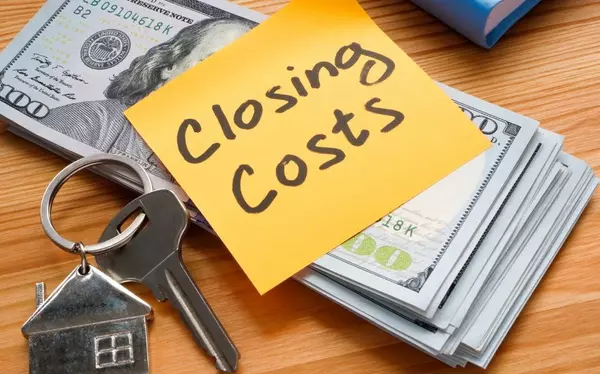How to Build a Home Buying Contingency Fund for Unexpected Expenses

How to Build a Home Buying Contingency Fund for Unexpected Expenses
The excitement of buying a home often overshadows the hidden costs and unforeseen expenses that can arise during the process. While you may have saved for a down payment, closing costs, and inspections, unexpected expenses like repairs, moving costs, or temporary housing can throw off your budget. That’s why building a home buying contingency fund is essential.
A contingency fund acts as a financial safety net to cover unplanned costs that come with purchasing a home. Experts recommend setting aside 2-5% of your home’s purchase price for unexpected expenses. If your home costs $300,000, that means saving an additional $6,000 to $15,000.
To start building your fund, first, analyze your budget and calculate your monthly expenses. Cut back on non-essential spending and dedicate those savings to your contingency fund. Additionally, consider automating a portion of your income directly into a separate savings account to keep your home-buying budget intact.
Your contingency fund should cover things like unexpected repairs, furniture, moving fees, and temporary housing if needed. By preparing in advance, you’ll avoid financial stress and be ready for the unexpected, making your transition into homeownership smoother and more secure.
Key Takeaways: How to Build a Home Buying Contingency Fund for Unexpected Expenses
- Understand the Importance: A home buying contingency fund is essential to cover unexpected expenses that arise during the home buying process, such as repairs, moving costs, and closing fees.
- Recommended Savings: Aim to save 2-5% of your home’s purchase price. For a $300,000 home, this translates to an additional $6,000 to $15,000.
- Budget Analysis: Assess your monthly budget to identify non-essential expenses that can be cut back, allowing you to redirect those funds toward your contingency savings.
- Set Clear Savings Goals: Break down your total savings target into monthly or bi-weekly goals based on your home-buying timeline to make saving manageable.
- Automate Your Savings: Establish automatic transfers to a dedicated savings account to ensure consistent contributions without the temptation to spend.
- Anticipate Costs: Be aware of potential pre-closing costs (inspections, application fees), immediate post-purchase expenses (repairs, furniture), and ongoing maintenance costs (yard care, emergency repairs).
- Choose the Right Account: Store your contingency fund in a high-yield savings or money market account to earn interest while keeping your funds accessible.
- Enjoy Peace of Mind: Having a contingency fund reduces stress and ensures a smoother transition into homeownership, allowing you to focus on settling into your new home without financial worries.
Why You Need a Home Buying Contingency Fund
When purchasing a home, it’s easy to focus solely on the down payment and mortgage. However, there are hidden costs that can quickly add up, making it essential to have a contingency fund in place.
One of the first hidden costs is closing fees, which can include appraisals, inspections, and various administrative charges. These fees alone can range from 2-5% of the home’s purchase price. Additionally, moving expenses—whether hiring movers or renting a truck—are often overlooked but can be significant. Once the inspection report comes in, you might also face unexpected repairs that need immediate attention before you can move in.
Without a contingency fund, you may feel tempted to dip into your emergency savings, which can jeopardize your overall financial stability. Maintaining a separate fund for your home purchase allows you to prepare for these unexpected costs without disrupting your other financial goals.
It’s also important to anticipate post-purchase surprises. These can range from minor fixes like leaky faucets to more expensive repairs like replacing a roof or HVAC system. With a well-prepared contingency fund, you can handle these issues without stress, ensuring your homeownership experience begins on the right foot. This financial cushion is key to protecting your long-term stability and avoiding unnecessary debt.
Steps to Build a Home Buying Contingency Fund
Building a home buying contingency fund is a crucial step to ensure you’re financially prepared for unexpected costs. Here’s how to approach it effectively.
First, determine the appropriate fund size. A good rule of thumb is to save 1-5% of your home’s purchase price. For example, if you’re buying a $400,000 home, aim to set aside between $4,000 and $20,000. This range can be adjusted based on your personal financial comfort zone and how much risk you're willing to manage.
Next, set specific savings goals. Consider your home-buying timeline and decide how much you need to save monthly or bi-weekly. If you plan to buy in 12 months, break your total savings goal into manageable amounts. For instance, saving $500 per month would build a $6,000 fund in a year.
To ensure consistency, automate your savings. Establish automatic transfers to a designated savings account from your checking account. You can also use savings apps or budgeting tools to keep track and make the process easier.
Finally, cut unnecessary expenses to boost your savings. Temporarily reduce non-essential spending like dining out, entertainment, or subscriptions. Redirecting these funds to your contingency fund will help you reach your goal faster, making sure you're prepared for any surprises that come with homeownership.
Expenses to Anticipate When Buying a Home
Building a home buying contingency fund isn’t just about saving money—it's about being prepared for specific costs that arise throughout the process. Below is a summary of the main costs you should expect.
First, there are pre-closing costs, such as home inspections and loan application fees. Home inspections are essential for identifying issues before closing, and loan application fees can include credit checks, appraisals, and other administrative costs. These expenses can quickly add up, making it vital to budget for them in advance.
Once you’ve purchased the home, you'll likely encounter immediate post-purchase expenses. Repairs or renovations might be needed to make the home move-in ready. Additionally, you may need to buy new furniture or appliances to furnish your space. These costs can be substantial, especially if you’re upgrading or replacing outdated items.
Finally, there are ongoing home maintenance costs. Owning a home requires regular attention to yard care, plumbing, and HVAC services. You'll also need to be prepared for unexpected emergency repairs, like a leaking roof or broken appliances. These issues often arise when least expected, so having funds set aside ensures you can handle them without disrupting your budget.
Anticipating these expenses and saving accordingly will help you transition into homeownership smoothly and with fewer financial surprises.
Where to Keep Your Contingency Fund
When building a home buying contingency fund, it’s important to not only save but to choose the right place to store those savings. You want your funds to be accessible while earning interest to maximize growth.
A high-yield savings account is a great option. These accounts offer higher interest rates than traditional savings accounts, allowing your money to grow without taking on risk. Since these accounts are FDIC-insured, your funds are safe, and you can easily access them when you need to cover unexpected home-related expenses.
Another option is a money market account. These accounts typically offer better interest rates than standard savings accounts and provide similar liquidity. While they may require a higher minimum balance, they still allow for easy withdrawals, making them a solid choice for contingency savings.
It's crucial to avoid risky investments like stocks or mutual funds for your contingency fund. The stock market can be volatile, and there’s a risk your fund could lose value when you need it most. Home buying is a short-term goal, so your savings should remain stable and accessible.
By placing your contingency fund in a safe, interest-earning account, you'll be financially prepared for unexpected expenses without worrying about market fluctuations or accessibility issues.
Benefits of Having a Contingency Fund
A home buying contingency fund offers several key benefits that can greatly enhance your experience as a new homeowner.
The comfort it offers is among its greatest benefits. Knowing you have a financial cushion for unexpected expenses, such as repairs or unplanned fees, can alleviate stress during the home buying process. This sense of security allows you to focus on enjoying your new home, rather than worrying about unforeseen costs.
A well-prepared contingency fund also ensures a smooth transition into homeownership. From the moment you close on your new house, you might face expenses like minor repairs, new appliances, or even landscaping costs. With a contingency fund in place, you can handle these costs without scrambling for cash, allowing you to settle in comfortably without added financial pressure.
Furthermore, having a contingency fund supports your long-term financial security. By setting aside specific savings for home-related costs, you avoid dipping into your emergency savings, which should be reserved for true emergencies like medical expenses or job loss. This separation protects your overall financial health, keeping you prepared for life's unexpected twists without compromising your homeownership journey.
In short, a contingency fund acts as a safety net, ensuring your transition into homeownership is stress-free and financially sound.
Conclusion:
Creating a home buying contingency fund is a smart and necessary step to ensure a smooth and financially secure transition into homeownership. While the process of buying a home is exciting, hidden and unexpected costs can arise at any stage—from pre-closing expenses to post-purchase repairs. By setting aside 2-5% of the home's purchase price, you can establish a financial safety net that will help you handle these costs without jeopardizing your financial well-being.
By carefully determining the appropriate fund size, setting savings goals, automating contributions, and cutting back on unnecessary expenses, you can efficiently build your contingency fund. Keeping your savings in a secure place, such as a high-yield savings or money market account, ensures your money remains accessible while it grows.
The benefits of having this fund are clear: peace of mind, a stress-free transition into your new home, and long-term financial stability. You'll be prepared for any surprises that come your way, whether it's immediate repairs or ongoing maintenance, all without tapping into emergency savings or accruing debt.
In the end, having a home buying contingency fund is not just about managing costs—it's about starting your homeownership journey with confidence and security.
Categories
Recent Posts










